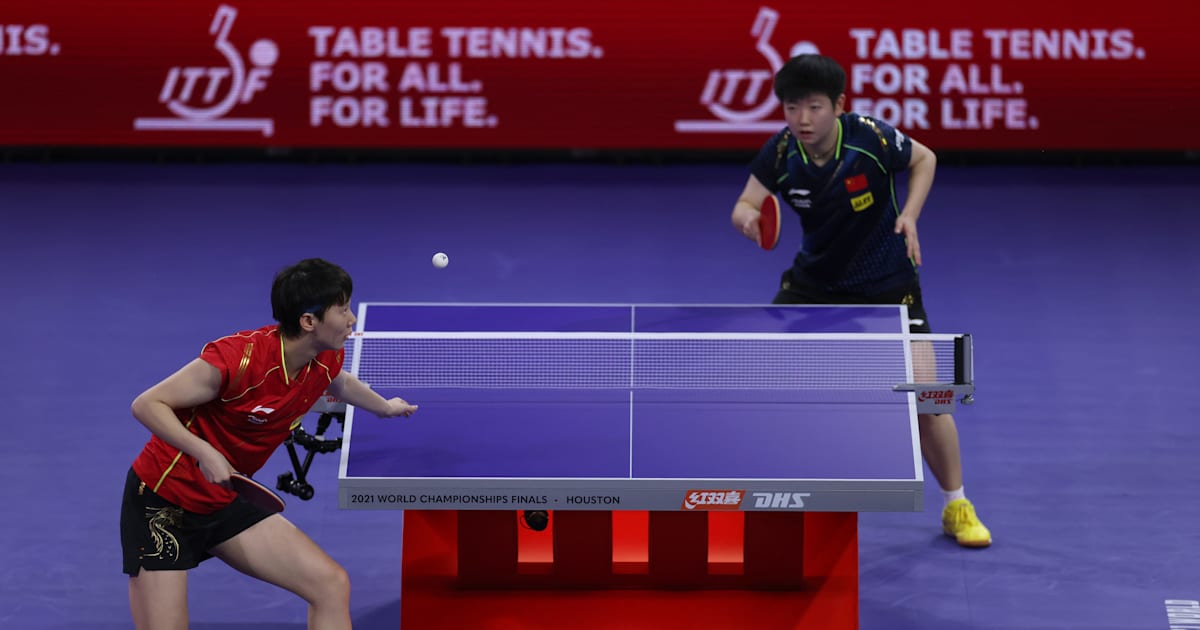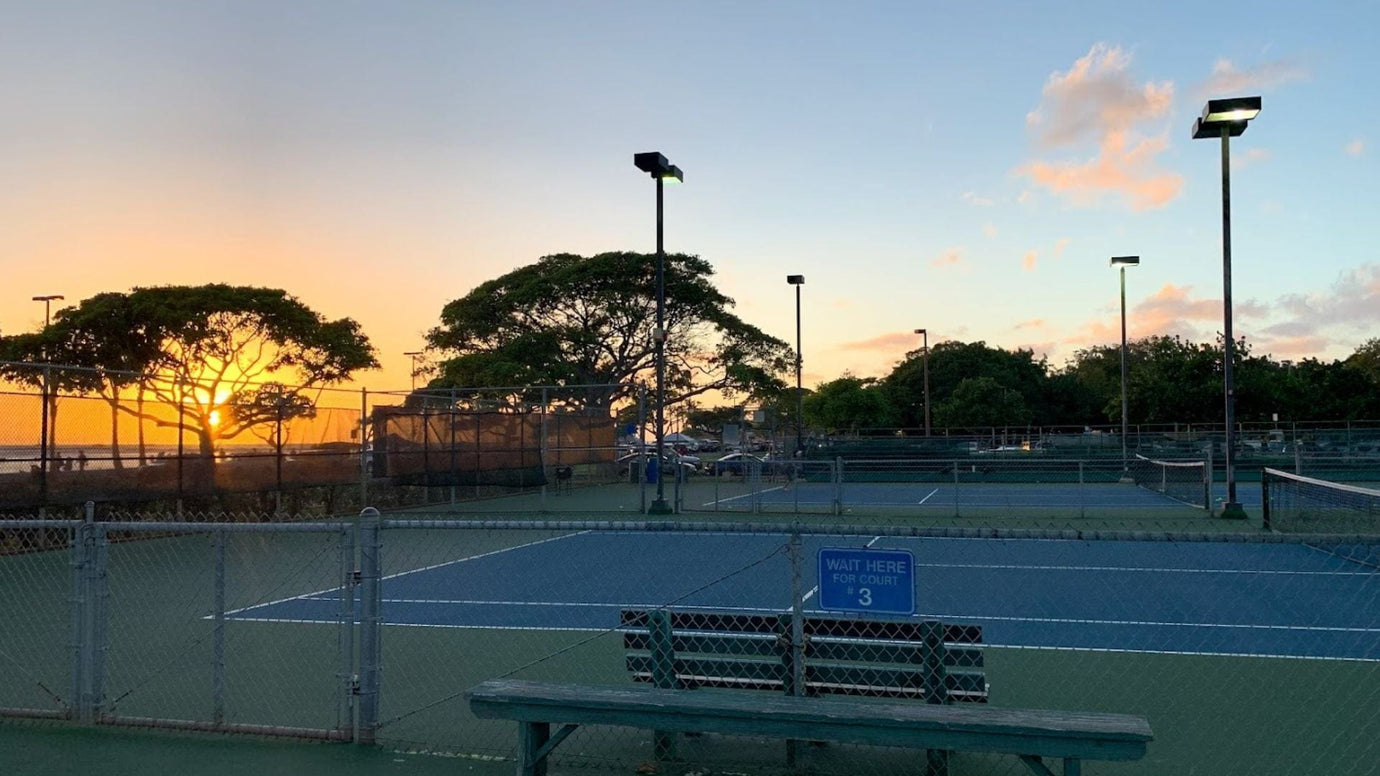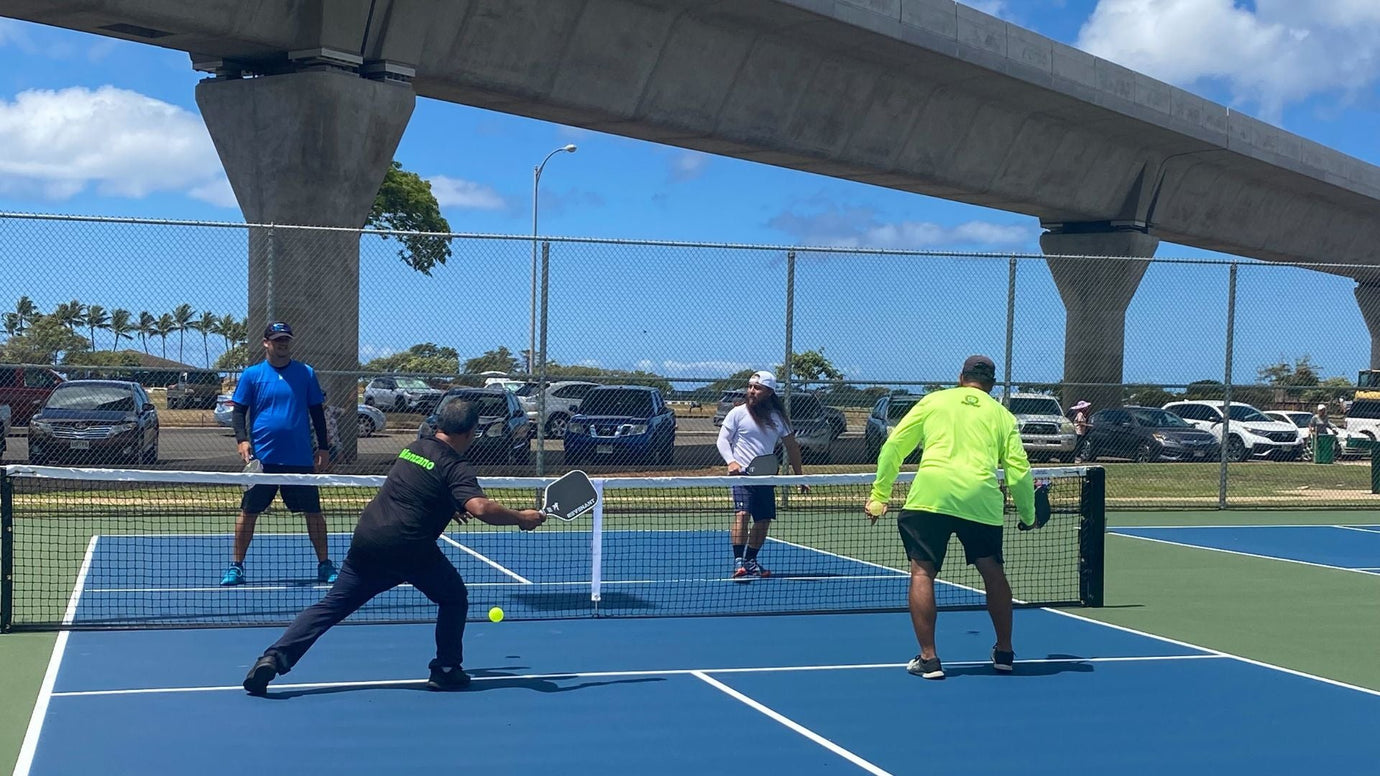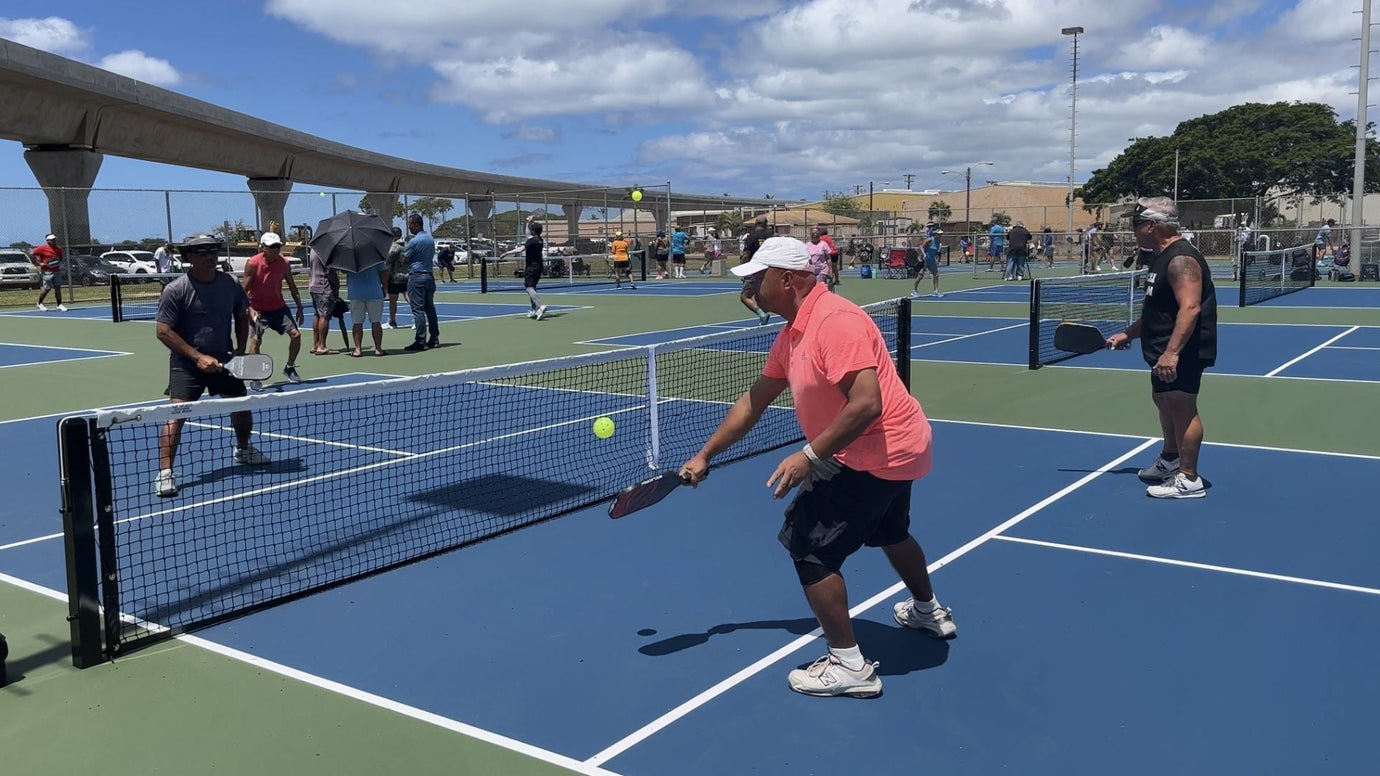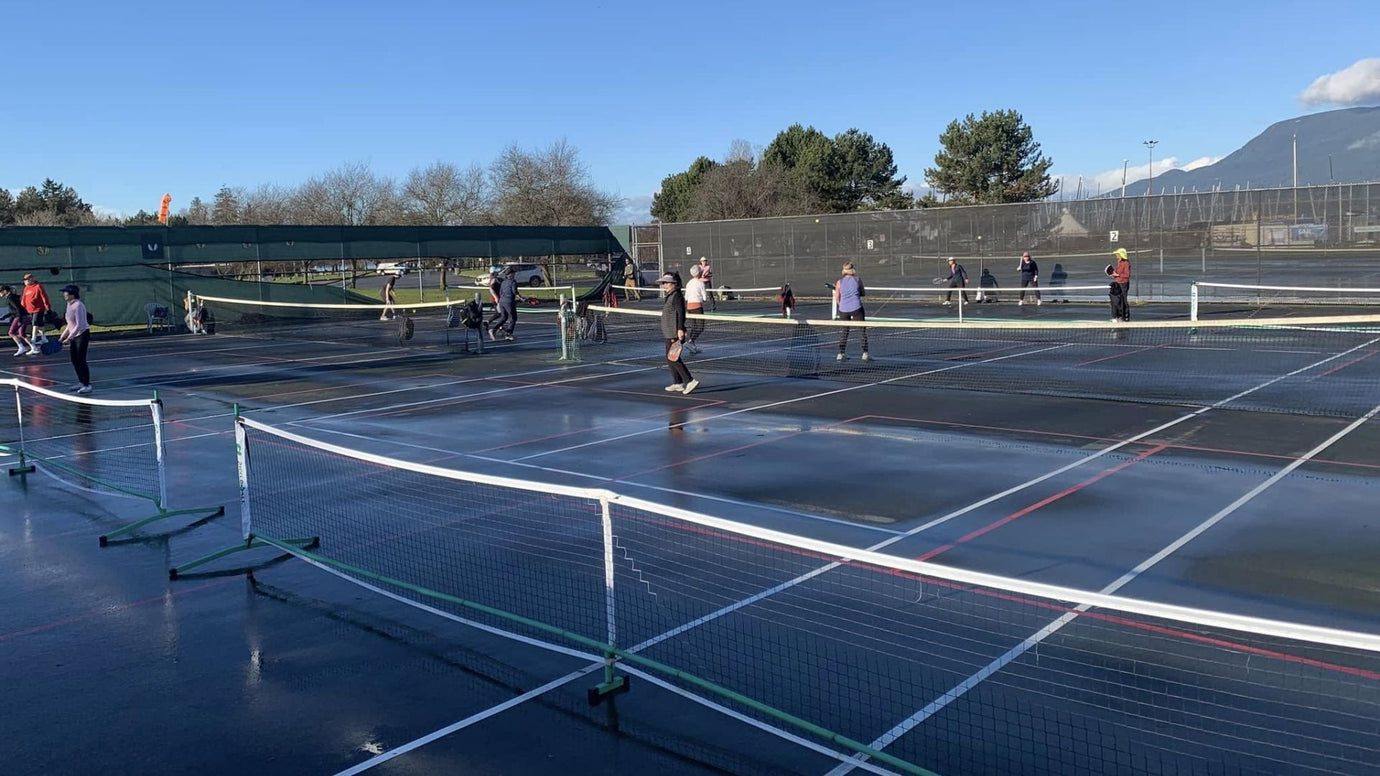Pickleball has taken the world by storm, captivating players of all ages with its easy-to-learn rules, social nature, and engaging gameplay. A unique blend of tennis, badminton, and table tennis, pickleball offers a fantastic way to stay active and connect with others. But if you've fallen in love with the fast-paced fun of pickleball and are looking to expand your horizons, you might be wondering: what other sports offer a similar thrill? At Pickleball Court Co., we're passionate about all things paddle sports, and we're here to guide you through three exciting disciplines that share a common spirit with pickleball.
Whether you're seeking a new challenge, a different court dynamic, or simply more ways to enjoy racket and paddle play, understanding these similar sports can open up a world of athletic enjoyment. Let's dive into Padel, Platform Tennis, and Table Tennis, exploring what makes them unique and how they resonate with the pickleball experience.
1. Padel: The Walled Court Sensation
Padel, often described as a hybrid of tennis and squash, is a rapidly growing racket sport that originated in Mexico and is particularly popular in Spain and Latin America. Played exclusively in doubles on an enclosed court, padel offers a dynamic and strategic game that shares many similarities with pickleball, especially in its emphasis on volleys and strategic shot placement.

How Padel is Similar to Pickleball:
- Doubles Play: Both padel and pickleball are predominantly played in doubles, fostering teamwork and communication. This social aspect is a major draw for players in both sports.
- Underhand Serve: Similar to pickleball, padel typically utilizes an underhand serve, making it easier for beginners to pick up and enjoy the game quickly.
- Volleying and Soft Play: While powerful shots exist, both sports reward soft hands, strategic dinks, and well-placed volleys. The enclosed nature of the padel court, with walls that can be used in play, adds another layer of strategy, akin to how the non-volley zone (kitchen) influences play in pickleball.
- Paddle-based: Both sports use solid paddles, though padel paddles are generally thicker and have holes, while pickleball paddles are typically thinner and can be made from various materials.
Key Differences:
- Court Enclosure: Padel courts are enclosed by glass walls and mesh fencing, which are an integral part of the game. Players can hit the ball off the walls, leading to longer rallies and unique shot opportunities. Pickleball courts are open, with a net as the only barrier.
- Ball Type: Padel uses a depressurized tennis ball, which has less bounce than a standard tennis ball but more bounce than a pickleball. Pickleball uses a perforated plastic ball, similar to a wiffle ball.
- Scoring: Padel uses traditional tennis scoring (15, 30, 40, game, set, match), while pickleball uses a unique scoring system where points can only be scored by the serving team.
- Court Size: Padel courts are smaller than tennis courts but larger than pickleball courts. A standard padel court is 20 meters (65.6 feet) long and 10 meters (32.8 feet) wide [1]. Pickleball courts are 44 feet long and 20 feet wide.
| Feature | Pickleball | Padel |
| Court | Open court, 44 ft x 20 ft | Enclosed court with walls, 65.6 ft x 32.8 ft |
| Ball | Perforated plastic ball (wiffle ball) | Depressurized tennis ball |
| Paddle/Racket | Solid paddle | Solid paddle with holes |
| Serve | Underhand | Underhand |
| Scoring | Points only on serve, to 11 (win by 2) | Traditional tennis scoring (15, 30, 40, etc.) |
| Play Style | Volleys, dinks, strategic placement | Volleys, strategic placement, use of walls |
2. Platform Tennis: The Winter Paddle Sport
Platform tennis, often called "paddle tennis" or "pop tennis," is a unique racket sport played outdoors in colder weather. It originated in the United States and is known for its smaller court enclosed by screens, which are used as part of the game, similar to how walls are used in squash or padel. This sport offers a fast-paced, strategic game that can be enjoyed year-round, making it a great option for those who love the paddle sports experience.

How Platform Tennis is Similar to Pickleball:
- Paddle-based Play: Both sports utilize solid paddles, though platform tennis paddles are typically longer and have a textured surface for grip on the ball.
- Doubles Focus: Platform tennis is almost exclusively played in doubles, emphasizing teamwork and communication, much like pickleball.
- Strategic Volleying: Due to the smaller court and the ability to play off the screens, volleying and strategic shot placement are crucial in platform tennis, mirroring the importance of dinks and volleys in pickleball.
- Underhand Serve Option: While overhead serves are allowed, many players opt for an underhand serve in platform tennis, which is the standard in pickleball.
Key Differences:
- Enclosed Court with Screens: The most distinctive feature of platform tennis is its elevated court enclosed by 12-foot high screens. These screens are in play, allowing the ball to be hit off them, creating extended rallies and unique angles. Pickleball courts are open.
- Ball Type: Platform tennis uses a depressurized, spongy rubber ball that has less bounce than a tennis ball. Pickleball uses a hard plastic wiffle-like ball.
- Court Size: Platform tennis courts are significantly smaller than tennis courts but larger than pickleball courts. A standard platform tennis court is 44 feet long and 20 feet wide, with a playing area of 60 feet by 30 feet including the out-of-bounds area [2]. This is the same playing area as a pickleball court, but the screens allow for different play dynamics.
- Elevated Court: Platform tennis courts are often elevated, allowing heaters underneath to melt snow and ice, making it a true winter sport.
| Feature | Pickleball | Platform Tennis |
| Court | Open court, 44 ft x 20 ft | Elevated court with screens, 60 ft x 30 ft playing area |
| Ball | Perforated plastic ball (wiffle ball) | Depressurized spongy rubber ball |
| Paddle/Racket | Solid paddle | Solid paddle with textured surface |
| Serve | Underhand | Underhand or overhead |
| Play Style | Volleys, dinks, strategic placement | Volleys, strategic placement, use of screens |
3. Table Tennis: The Original Paddle Sport
Table tennis, commonly known as ping-pong, is perhaps the most direct ancestor of pickleball among the sports discussed. Played on a table divided by a net, it is a fast-paced game that requires quick reflexes, precision, and strategic thinking. Many of the fundamental skills in table tennis, such as hand-eye coordination and paddle control, translate directly to pickleball.
How Table Tennis is Similar to Pickleball:
- Paddle and Ball: Both sports use a paddle to hit a lightweight ball over a net. While the size and material differ, the basic mechanics of striking the ball with a paddle are very similar.
- Net Play and Short Game: The close-to-the-net play, particularly the emphasis on dinks and drops, is a hallmark of both table tennis and pickleball. In both games, controlling the short game near the net is crucial for success.
- Hand-Eye Coordination: Both sports demand excellent hand-eye coordination and quick reactions due to the fast pace and small playing area (relative to other racket sports).
- Strategic Placement: Rather than relying solely on power, both table tennis and pickleball reward players who can strategically place the ball to exploit their opponent's weaknesses.
Key Differences:
- Playing Surface: Table tennis is played on a solid table, while pickleball is played on a court surface. This fundamental difference impacts ball bounce and player movement significantly.
- Ball Type: Table tennis uses a very lightweight, hollow celluloid or plastic ball. Pickleball uses a heavier, perforated plastic ball.
- Paddle Type: Table tennis paddles (rackets) are typically smaller and covered with rubber on both sides, allowing for significant spin. Pickleball paddles are larger, solid, and generally do not impart as much spin.
- Court Size: Table tennis is played on a much smaller surface (a table) compared to a pickleball court. A standard table tennis table is 2.74 meters (9 feet) long and 1.525 meters (5 feet) wide [3].
- Player Movement: Table tennis involves minimal court movement, primarily side-to-side and forward-backward movements around the table. Pickleball requires more extensive court coverage and lateral movement.
| Feature | Pickleball | Table Tennis |
| Court | Open court, 44 ft x 20 ft | Table, 9 ft x 5 ft |
| Ball | Perforated plastic ball (wiffle ball) | Lightweight, hollow plastic ball |
| Paddle/Racket | Solid paddle | Smaller paddle with rubber surface |
| Serve | Underhand | Various serves, often with spin |
| Play Style | Volleys, dinks, strategic placement | Quick reflexes, spin, strategic placement |
Conclusion: Expanding Your Paddle Sport Horizons
Pickleball has carved out a unique niche in the world of racket and paddle sports, offering an accessible and enjoyable experience for millions. However, its popularity also serves as a gateway to discovering other fantastic sports that share its spirit of fun, strategy, and community. Padel, Platform Tennis, and Table Tennis each offer distinct variations on the paddle sport theme, providing new challenges and opportunities for engagement.
Whether you're looking for a sport that utilizes walls, thrives in colder climates, or demands lightning-fast reflexes on a smaller scale, these three sports offer compelling alternatives or complements to your pickleball passion. Exploring them can deepen your appreciation for the diverse world of paddle sports and keep you active and entertained for years to come.
At Pickleball Court Co., we are dedicated to providing high-quality pickleball court roll floors, enabling enthusiasts to set up their own courts with ease. While we don't offer installation services, our products are designed for straightforward setup, and we provide comprehensive guides to assist you in creating your perfect playing space. We believe that the joy of paddle sports should be accessible to everyone, and we're here to support your journey, whether you're playing pickleball or exploring its exciting cousins.
Frequently Asked Questions (FAQs)
Here are some common questions about pickleball and related sports:
Q: What three sports are similar to pickleball?
A: The three sports most similar to pickleball are Padel, Platform Tennis (also known as Paddle Tennis or Pop Tennis), and Table Tennis (Ping Pong). They all involve hitting a ball with a paddle or racket over a net, often in a smaller court setting than traditional tennis.
Q: Is pickleball like ping pong?
A: Yes, pickleball shares many similarities with ping pong (table tennis), especially in its emphasis on quick reflexes, hand-eye coordination, and strategic short-game play near the net. Both use paddles and a lightweight ball, though the playing surface and ball types differ significantly.
Q: Can you play pickleball on a tennis court?
A: Yes, you can set up a pickleball court on a tennis court. A standard pickleball court is smaller than a tennis court, so multiple pickleball courts can often fit on one tennis court. You would need a portable pickleball net and court lines (often temporary tape) to mark the boundaries.
Q: How much does it cost to build a pickleball court?
A: The cost to build a pickleball court can vary widely depending on factors such as the type of surface, whether it's indoor or outdoor, and additional amenities. For those looking for a cost-effective solution, Pickleball Court Co. offers high-quality roll floors that make setting up a court much simpler and more affordable.
Q: How easy is it to install a pickleball court roll floor from Pickleball Court Co.?
A: Our pickleball court roll floors are designed for incredibly easy installation. While we do not provide installation services, the process is straightforward, and we offer comprehensive guides to walk you through every step, allowing you to set up your court quickly and efficiently.
Q: What is the best surface for a pickleball court?
A: The best surface for a pickleball court is typically a cushioned acrylic surface, which provides good bounce, traction, and shock absorption. Our pickleball court roll floors are manufactured to provide an excellent playing surface that is durable and consistent.
Q: What equipment is needed for pickleball?
A: To play pickleball, you primarily need a pickleball paddle, a pickleball (the ball itself), a net, and a court. Comfortable athletic wear and court shoes are also recommended.


